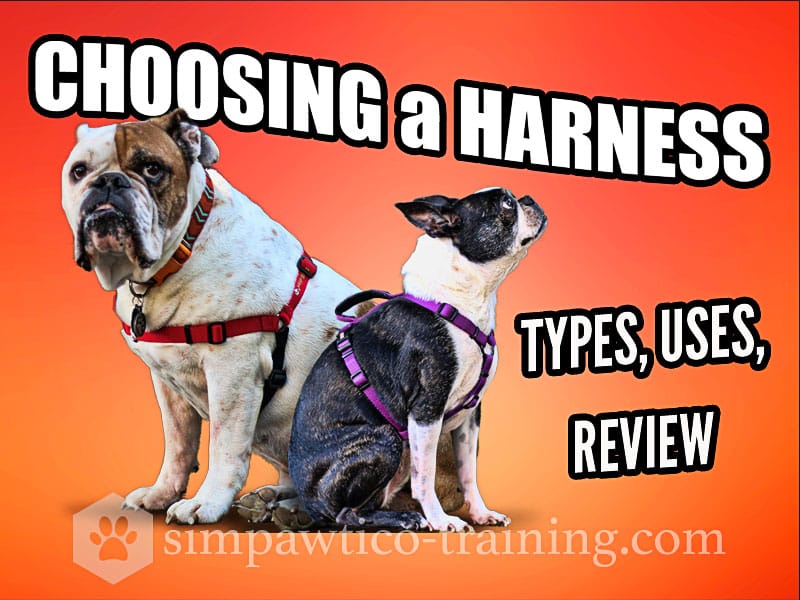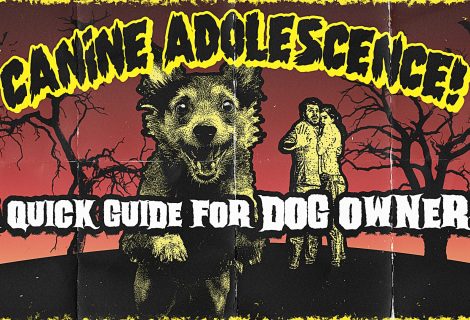Choosing a Dog Harness – Best Ones and How to Use
In the market for a harness? Well, stick with me, and I’ll give you the low-down on what to get, why, and how to use it best.
A BRIEF HISTORY
Although dog collars have been around since ancient Egypt, we’re not sure who was the first to harness a dog. In Canadian Thule sites from around 1000 AD there is archaeological evidence of dog harnessing. There are historical records in Arabian literature of the tenth century regarding the use of sled dogs in the Sub Arctic. And in the thirteenth century, Marco Polo wrote about seeing dog sleds in the steppes of Siberia. Even the Chinese wrote about dog sleds in examples of 14th-century poetry. At any rate, harnesses have gone through roughly three birthing periods:
The first was when we harnessed dogs to sleds. At this point, dogs were working animals, not companions. The sleds allowed us to traverse ice, snow, and even mud in conditions that precluded horses or carriages.
The second was when we developed smaller breeds, and dogs started moving into companion territory. Dogs were being bred to hang out rather than work. and harnesses allowed us to pull them to safety without breaking their necks.
The third, of course, is the modern age, where harnesses of many, many types are available at most pet stores, and dogs run the full gamut for everything from working animals to companions. Nowadays, there are so many configurations and intended purposes you must know what you need. That’s what this video is all about.
Today, there are essentially two main categories of harnesses:
- Body harnesses
- Front-hook harnesses.
Each one serves different overall purposes.
We do not recommend head halters like the Gentle Leader, Halti, or Snoot Loop. We’ve got an article explaining why HERE.
WHAT KIND OF HARNESS SHOULD I GET?
Let’s first talk about the main reason people get harnesses in the first place: their dog pulls. You’ve probably been told you need a harness at some point by a well-meaning pet store employee or a friendly neighbor. However, putting a body harness on your dog will make pulling worse.
You’ve got to come at the problem from a different angle. Literally.
When your dog’s wearing a body harness, and they start forging ahead, it’s natural for us to hold them back, even trying to pull them back. Since harnesses were originally invented to attach dogs to dog sleds, then by design, a harness redistributes pressure onto the dog’s frame. In essence, this makes it more comfortable to pull. Thus, the problem becomes a test of strength and reduces it to oppositional forces. With a dog’s lower center of gravity and powerful back legs, you will struggle no matter what kind of dog you have.
Let’s do this smarter.
Let’s not try to muscle the dog into compliance.
Instead of oppositional energy, converting it to rotational energy is much easier. This is the principle behind a front-hook harness. If the dog pulls, the harness starts to turn their body around, and a dog won’t go in a direction they’re not facing.
Bottom line: a front-hook harness is the best training choice for a dog that pulls, not a body harness. As with any training tool, the ultimate goal is to use it as a weigh-station and phase out of the tool over time. A well-mannered, non-reactive dog that walks nicely on a leash could then return to a flat collar or a body harness.
Likewise, there are instances when a front-hook harness is inappropriate, and a body harness is better. The two most prevalent examples for the modern pet owner are if you tie your dog out or when you’re traveling in a car. A body harness is far superior in these instances over a front-hook harness or even a collar. A back-hook body harness is also better if you engage in athletic activities with your dog, such as jogging, agility, frisbee or fetch, or dock diving. A front-hook harness can somewhat impede the full range of motion in the shoulders.
Also, if your dog is well-trained and walks politely, using a body harness is really a non-issue anyways.
In some cases, especially if you live in hilly areas, you may want to train your dog to pull. Any dog trainer worth their salt knows that putting an annoying behavior on cue builds an off-switch for it. Training your dog to pull when you want can help cease pulling at other times. A body harness is best in this regard. So let’s break this down a bit.
Pros of a front hook harness:
- The best option for helping train a dog to stop pulling
- Easier to put on and remove. Most of the best brands are lickety-split on and off
Cons of a front hook harness:
- Can be chewed up if left on, so they’re not recommended to be worn all of the time
- Not recommended for a tie-out, riding in the car, or for athletic activities
Pros of a back hook or body harness:
- Can be worn all the time
- Appropriate for tying out or for securing in a car
- Better for athletic activities with your dog
- Good, secure safety for smaller dogs. Perhaps even the best choice for toy breeds
Cons of a back hook harness:
- NOT recommended for a dog that pulls
- Can be a pain to get on and off
THE “NO-PULL” MYTH
There are many body harnesses out there labeled “no-pull.” These use interesting configurations of cords and straps to put pressure on different places on a dog’s body. I’ve given many of these a series of test runs over the years, and they’re all pretty hit-and-miss in that regard. Plus, they can be overpriced and complicated to get on.
As I’ve said many times before, I’m an adherent of the KISS principle: Keep It Simple, Stupid. I don’t like maneuvering a dog around to get the bloody thing on; I want the harness to go on and off lightning-fast.
For example, the Sporn Non-Pull harness: it’s about 50/50 effectiveness, and for massive dogs, it’s pretty useless. The Freedom No Pull harness isn’t bad, but their system, like many others, relies too heavily on the hardware. Two leashes? That’s absurd and gimmicky.
Keep it simple, stupid: leverage is the key, along with solid training techniques. Any manufacturer that promises to do the job for you is lying.
Along those lines, I recommend looking at my article and video on handling a leash like a pro. Learning safe, sensible, and solid handling skills will make your entire experience with your dog better.
KEEP THE COLLAR
No matter what harness you go with and how you use it, I still recommend a collar. Dogs should always have their ID on them, and keeping the ID on something other than the harness allows you to remove the harness if necessary. Front hook harnesses also work better hooked to the collar, and some companies even sell double-headed leashes for this exact purpose, although I still say even this is unnecessary. Plus, if your dog doesn’t wear their harness in the house, a collar will be your last resort if they need to be restrained.
RECOMMENDATIONS
The links below are affiliate links. These won’t cost you anything, but the commissions we may earn through them help offset the cost of dog treats. Thanks for your support!
- As far as front-hook harnesses go, the Softouch SENSE-ation is my favorite. It’s durable, simple, and effective.
- The PetSafe Easy Walk is my second choice. It’s also a great harness.
- For body harnesses The Kong Comfort Control Grip is my favorite overall. The handle allows dogs to be restrained, lifted, and even secured in a car without any additional equipment.
- Both the Four Paws Comfort Control Harness and the Simply Wag Dog Body Harness for little guys have a breathable mesh that offers support and less chafing. These may be your best choice for small and/or portly dogs
Some nifty hybrids out there offer dual connection points for the best of both worlds:
- The Ruffwear Front Range Harness is durable and well-made and features dual connection points on the back and the front. It’s suitable for walking training AND riding in the car. This is one of the highest-rated hybrids on the market right now.
- There’s also the Kurgo Go-Tech Adventure Harness. Reviews are 50/50 on the overall durability though, so use your discretion if you have a strong dog.
You can see all of our recommendations for harnesses—and all of your dog gear—in our free annual Buyer’s Guide.
So good luck choosing a harness if you need one.
Questions: what’s your experience with harnesses, and what do you recommend? Let’s connect in the comments.
As always, keep learning and practicing.









Great article. I have often wondered which was better the leash or harness. What do you think of those that cover the dog’s mouths? I really get sad when I see those on dogs, but I once read it is a good training tool, as it is similar to what a Mother dog’s training is like?
For car travel I use the Sleepypod Harness. It is the only harness on the market that has passed the Center for Pet Safety’s crashed test program for both styles and all sizes. It comes in two styles and costs between $79 and $119 depending on style and size. We travel a lot so the price was worth it to us. It also has a double clip on the back for use as a walking harness and is easy to put on and take off.
The Sleepypod is a good one, although the Center for Pet Safety hasn’t done any tests since 2013 that I can find. The ZuGoPet Rocketeer also passed along with the Sleepypod. Since then the EzyDog Drive has actually passed crash tests in the US, UK, and Australia. That one is my top pick for car safety.
Love your You Tube videos. Very Helpful.
Have you reviewed the Tre Ponti line of harnesses?
And what would your recommend for a lab who pulls on leash but walks beside me without the leash. Leash laws apply here in Massachusetts so I have to use something!
I have a balance issue where I fall forward. Use a weight back pack as a counter balance but she can still pull me too hard. Thank you for sharing your knowledge.
Marilyn